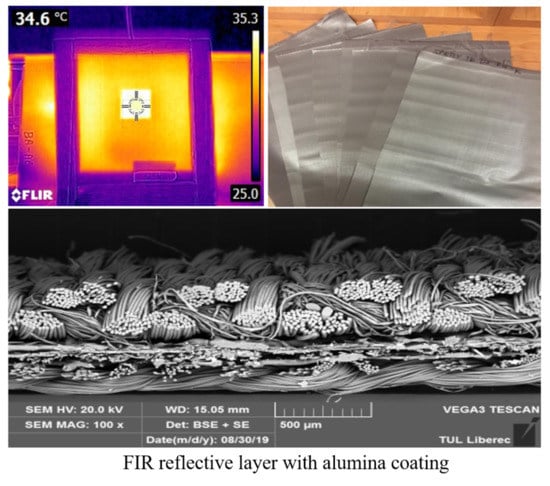Sandwich Structures Reflecting Thermal Radiation Produced by the Human Body
Abstract
Share and Cite
Militký, J.; Křemenáková, D.; Venkataraman, M.; Večerník, J.; Martínková, L.; Marek, J. Sandwich Structures Reflecting Thermal Radiation Produced by the Human Body. Polymers 2021, 13, 3309. https://doi.org/10.3390/polym13193309
Militký J, Křemenáková D, Venkataraman M, Večerník J, Martínková L, Marek J. Sandwich Structures Reflecting Thermal Radiation Produced by the Human Body. Polymers. 2021; 13(19):3309. https://doi.org/10.3390/polym13193309
Chicago/Turabian StyleMilitký, Jiří, Dana Křemenáková, Mohanapriya Venkataraman, Josef Večerník, Lenka Martínková, and Jan Marek. 2021. "Sandwich Structures Reflecting Thermal Radiation Produced by the Human Body" Polymers 13, no. 19: 3309. https://doi.org/10.3390/polym13193309
APA StyleMilitký, J., Křemenáková, D., Venkataraman, M., Večerník, J., Martínková, L., & Marek, J. (2021). Sandwich Structures Reflecting Thermal Radiation Produced by the Human Body. Polymers, 13(19), 3309. https://doi.org/10.3390/polym13193309








